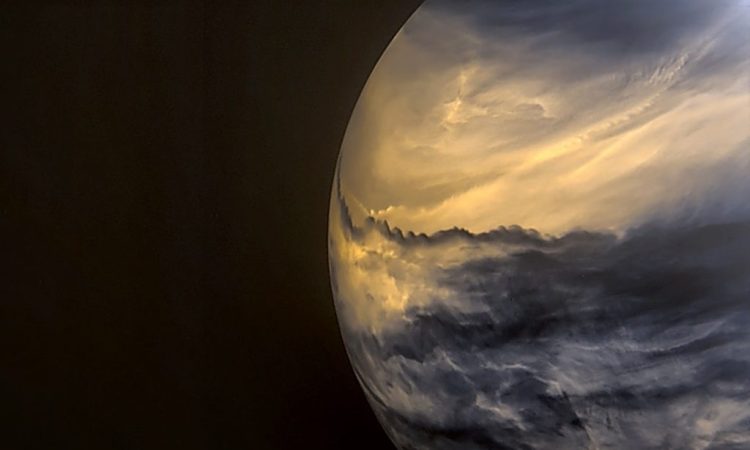
In an adrenaline-filled simulation published on YouTube, the American space agency shows what Venus might look like inside its dense atmosphere
NASA has already announced for some time that it wants to explore Venus in the early 2030s. The first, called VERITAS (short for Venus Emissivity Radio Science InSAR Topography and Spectroscopy) involves sending a probe that would orbit the planet, with the aim of peering through its surroundings. The second, called DAVINCI (Deep Atmosphere Venus Investigation of Noble Gas, Chemistry and Imaging), would go a little further, releasing a probe into the Venusian atmosphere. In a new video published on the agency’s YouTube channel, the simulation of what Venus might look like from the inside.
Venus, seen from inside
The DAVINCI mission is planned for 2029 and will be divided into two parts. In the first, the main spacecraft will perform two flybys of the planet to study its atmosphere and surface. The spacecraft’s work will focus on observing Venusian clouds and trying to identify which absorb all the ultraviolet light coming from the Sun.
On the face of the planet not facing the Sun the probe will map the surface in infrared, given that the rocks, at night, they release the heat absorbed during the day. Scientists hope to be able to better understand how the strange plateaus on the “hellish” planet were formed. Seven months later the probe will make a descent of about an hour through the clouds, transmitting all possible data to Earth. If so far we have only been able to observe without getting too close (or, at least, without reducing the probes we sent to Venus to dust), this time DAVINCI will detect the composition, temperatures, pressures and speeds of the winds present in every layer of the Venusian atmosphere. The NASA mission team hopes to better understand how this evolved Earth’s failed twin and to understand, once and for all, if there was once liquid water on Venus.
How the DAVINCI mission will end
Once the planet’s surface is visible, the probe will begin capturing as many high-resolution images of Venusian rocks as possible. On the other hand, the surface of Venus is rich in these volcanic rocky pieces, where the rock continually bent: a phenomenon that here only occurs in the depths of the earth’s crust. Scientists will use images and data to understand how these rocks ended up on the surface, in order to allow them to reconstruct the planet’s troubled past.
In short, we’ll see once and for all what it might be like to be on the surface of Venus. It’s the beauty of science and new technological discoveries: they allow you to travel in space and time without leaving your home. And, indeed, this time perhaps we will also be able to find out whether Venus was once a habitable planet or not.
Read more:
Read the article “” on space.com

